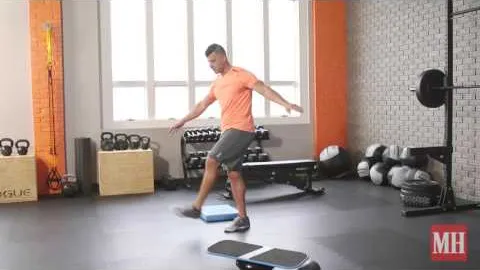
Single-Leg Balance Flow Exercise: Strengthening and Stability for Optimal Fitness
One of the most underrated exercises for strengthening and improving stability is the Single-Leg Balance Flow exercise. This exercise is not only great for building leg strength but also for enhancing proprioception and coordination. Whether you are an athlete looking to enhance your performance or someone seeking better balance and stability in everyday life, incorporating the Single-Leg Balance Flow exercise into your fitness routine can yield remarkable results.
The Single-Leg Balance Flow exercise focuses on engaging the muscles in one leg while maintaining balance and stability. It requires core strength and stability, as well as strong leg muscles to maintain proper form throughout the exercise.
To perform the Single-Leg Balance Flow exercise, start by standing on one leg with your knee slightly bent. Engage your core, keeping your back straight and shoulders relaxed. Extend your other leg out in front of you, parallel to the ground, and reach your arms out to the sides for balance.
The Single-Leg Balance Flow exercise is highly effective in improving balance and stability. By challenging your body to stay balanced on one leg, you engage the muscles responsible for maintaining stability, including the muscles in your ankle, knee, and hip joints. Regular practice of this exercise can significantly enhance your overall balance, reducing the risk of falls and injuries.
As you balance on one leg, your supporting leg muscles are continuously working to maintain stability. This exercise targets and strengthens the muscles in your calves, hamstrings, quadriceps, and glutes. Over time, these muscles become stronger, leading to improved leg strength, power, and endurance.
Proprioception, or the awareness of the positioning of your body in space, is crucial for maintaining balance and coordination. The Single-Leg Balance Flow exercise challenges your proprioceptive abilities, as your body must constantly adjust to stay upright. Regular practice of this exercise can significantly enhance your proprioception, leading to improved coordination in various physical activities.
The Single-Leg Balance Flow exercise requires core engagement to maintain stability and balance. Your core muscles, including the abdominals and lower back muscles, work together to stabilize your body and keep it aligned. Strengthening your core muscles through this exercise can lead to improved posture and overall stability in everyday movements.
The Single-Leg Balance Flow exercise requires focus and concentration, as you have to be aware of your body's positioning and balance. By practicing this exercise regularly, you can develop a stronger mind-body connection, enhancing your ability to control your movements and maintain stability in various activities.
To get the most out of the Single-Leg Balance Flow exercise, consider the following tips:
Start with shorter durations: Begin by holding the balance for 15-20 seconds on each leg, gradually increasing the duration as you become more comfortable and confident.
Focus on form: Keep your back straight, shoulders relaxed, and core engaged throughout the exercise. Avoid leaning or tilting your body to maintain proper alignment.
Use a support if needed: If you find it challenging to balance on one leg initially, use a wall, chair, or any stable support to hold onto until you develop sufficient strength and balance.
Progress to more challenging variations: Once you feel comfortable with the basic Single-Leg Balance Flow exercise, you can progress by incorporating additional challenges, such as closing your eyes or performing the exercise on an uneven surface.
Incorporate it into your fitness routine: Aim to include the Single-Leg Balance Flow exercise at least two to three times per week in your fitness routine. You can perform it as a standalone exercise or incorporate it into a full-body workout routine.
The Single-Leg Balance Flow exercise is a simple yet highly effective exercise for strengthening leg muscles, improving balance and stability, and enhancing overall fitness performance. By regularly incorporating this exercise into your fitness routine, you can build strength, stability, and coordination, leading to optimal fitness and reduced risk of injuries. Remember to start slowly, focus on form, and gradually progress to more challenging variations to maximize the benefits of this exercise. So, why not give the Single-Leg Balance Flow exercise a try and unlock its full potential for your fitness journey?
If you're looking for a gym, fitness club or yoga studio, you've come to the right place.
You can find information about gyms in your area. Browse catalog of gyms and find gyms with classes which are you looking for.
On gym page you can find simple information like address, phone or website. You can find list of available classes. You can check availability of personal training or small group classes. On place page you can also see information about open hours.
You can find gyms near you with amenities, courts, studios and equipments.
Use our map to find gym at your city or district.
In Gym Navigator you can find list of exercises with movies for many body parts.
You can browse exercises catalog and find exercises the best of you.
You can also find exercises grouped into workout plans, which you can use to improve you body. Each routine show you exercises one by one and give you possibility to count you progress and count down rest time.